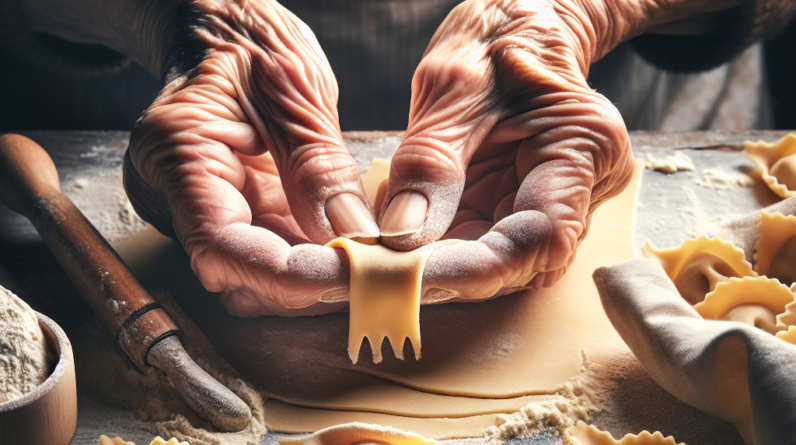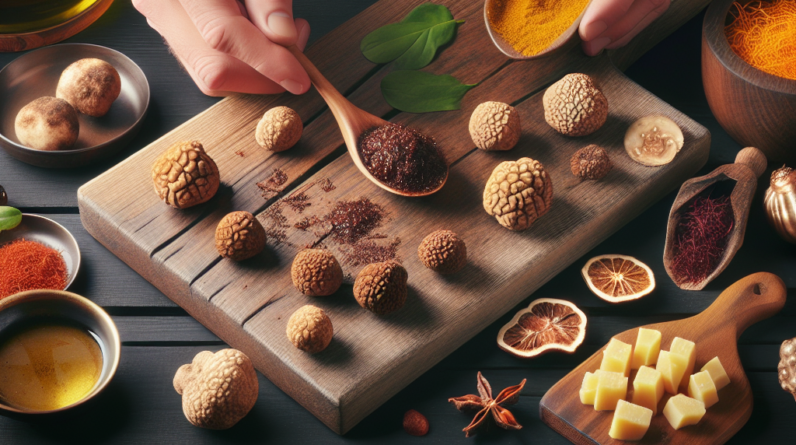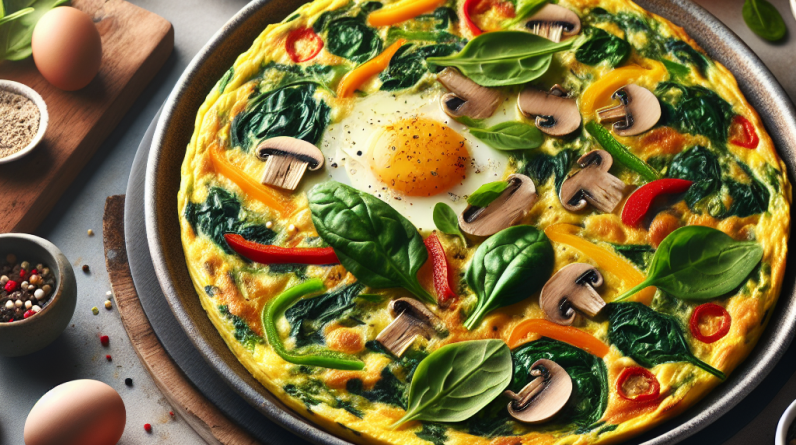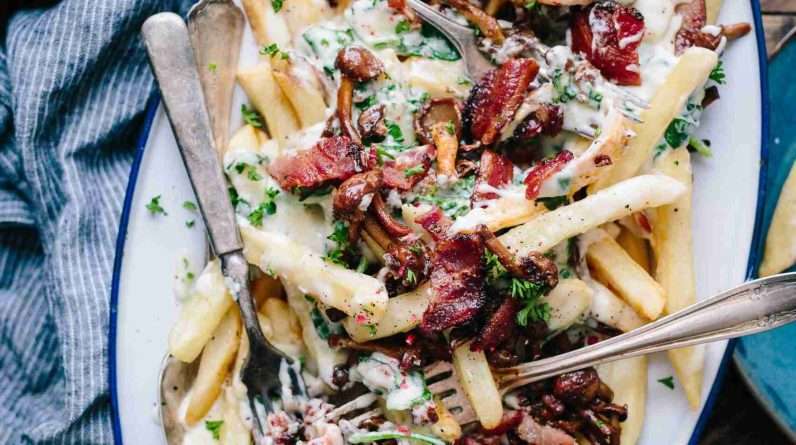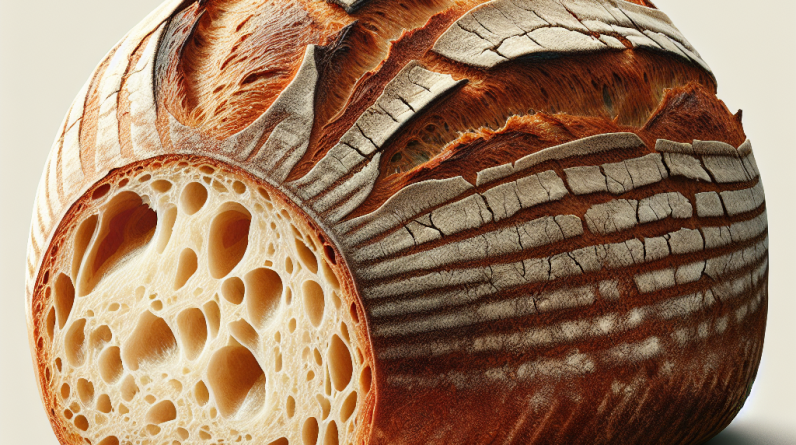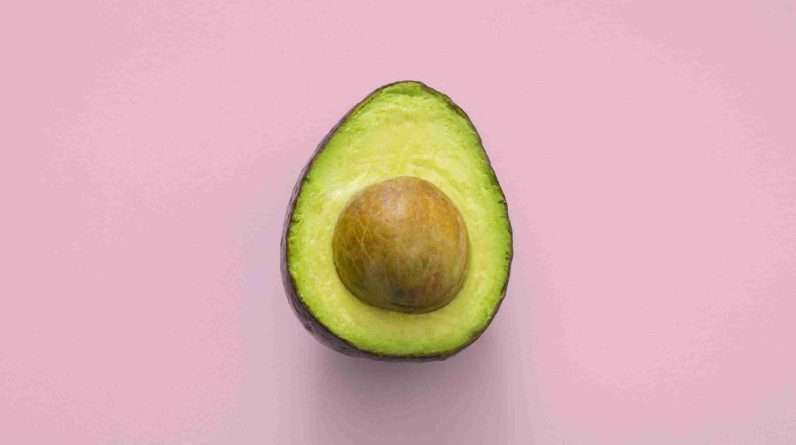Are you ready to embark on a culinary adventure that will transport you straight to Italy? In this article, we will unravel the secrets of crafting the perfect homemade gnocchi that will have your taste buds dancing with delight. Whether you’re a seasoned chef or a novice in the kitchen, we’ll guide you step by step, sharing our tried-and-true techniques and tips to help you master the art of making these delectable potato dumplings. So put on your apron and get ready to impress your friends and family with your newfound gnocchi prowess. Get ready to elevate your cooking game and unleash your inner Italian chef!
Choosing the Right Potatoes
When it comes to making homemade gnocchi, choosing the right type of potatoes is crucial. The two most popular choices are Russet potatoes and Yukon Gold potatoes.
Russet Potatoes
Russet potatoes are often favored for making gnocchi because of their high starch content. This results in a light and fluffy texture, which is ideal for gnocchi. Russet potatoes have a rough skin and are known for their earthy flavor. They are readily available in most grocery stores and are relatively inexpensive.
Yukon Gold Potatoes
Yukon Gold potatoes are another excellent choice for making gnocchi. They have a slightly lower starch content compared to Russets but still produce a delicious texture. Yukon Gold potatoes have a thin and smooth skin, and their golden-yellow flesh adds a beautiful color to the gnocchi. They have a buttery and rich flavor, making them a favorite among many chefs.
Avoid Waxy Potatoes
When making gnocchi, it’s important to avoid using waxy potatoes such as red or new potatoes. These potatoes have a higher moisture content and lower starch content, which can result in a heavy and gummy texture. They are better suited for boiling or roasting and are not ideal for achieving the light and fluffy consistency that is characteristic of gnocchi.
Preparing the Potatoes
Before moving on to preparing the dough, the potatoes need to be cooked and prepared properly to ensure the best results in your homemade gnocchi.
Boiling the Potatoes
To boil the potatoes, start by washing and scrubbing them thoroughly to remove any dirt or debris. Leave the skin intact to prevent excess moisture from getting into the potatoes. Place the whole potatoes in a pot of salted cold water and bring it to a boil. Cook the potatoes until they are tender when pierced with a fork, usually about 20-30 minutes. Once cooked, drain the potatoes and allow them to cool slightly before moving on to the next step.
Baking the Potatoes
Alternatively, you can choose to bake the potatoes instead of boiling them. Preheat your oven to 400°F (200°C) and prick the potatoes all over with a fork. This helps in releasing steam during the baking process. Place the potatoes on a baking sheet and bake them for about 45-60 minutes, or until they are tender when pierced with a fork. Remove the potatoes from the oven and let them cool before proceeding.
Peeling and Mashing the Potatoes
After the cooked potatoes have cooled down, it’s time to peel and mash them. The skin should easily peel away from the potatoes, revealing the soft and fluffy interior. Gently remove the skin and discard it. Then, using a potato masher or a fork, mash the potatoes until they are smooth and free of lumps. Take care not to overwork the potatoes as this can make the gnocchi dense and heavy.

Selecting the Proper Flour
Choosing the right flour is key to achieving the perfect texture and consistency in your gnocchi dough. There are several options to consider, depending on your dietary preferences and desired outcome.
All-Purpose Flour
All-purpose flour is the most commonly used flour for making gnocchi. It has a moderate protein content and provides a good balance between tenderness and structure. The gluten in all-purpose flour helps bind the ingredients together and gives the gnocchi a pleasant chewiness. It is readily available in most supermarkets and is suitable for most traditional gnocchi recipes.
Semolina Flour
Semolina flour, made from durum wheat, is another popular choice for making gnocchi. It has a slightly coarser texture and a higher protein content compared to all-purpose flour. This results in a slightly denser and firmer gnocchi. Semolina flour is often used in Italian cuisine and provides a more rustic and hearty texture to the gnocchi.
Gluten-Free Options
For those with gluten sensitivities or dietary restrictions, there are gluten-free flour options available. These include almond flour, rice flour, or a gluten-free all-purpose flour blend. While the texture and consistency may differ slightly from traditional gnocchi, these alternatives can still yield delicious results. It’s important to note that gluten-free dough may be more delicate and may require additional care when shaping and cooking.
Mixing the Dough
Once the potatoes are mashed and the flour is selected, it’s time to bring the dough together. This step involves combining the ingredients and kneading the dough until it reaches the desired consistency.
Combining Ingredients
In a large mixing bowl, combine the mashed potatoes with the chosen flour. It’s important to start with a small amount of flour and gradually add more as needed. The goal is to achieve a soft and slightly sticky dough that holds its shape without being too dry. Mix the ingredients together using a wooden spoon or your hands until they are well combined.
Kneading the Dough
Transfer the dough onto a lightly floured surface and gently knead it for a few minutes. Kneading helps distribute the ingredients evenly and develops the gluten in the flour, creating a more elastic and cohesive dough. Be careful not to over-knead the dough as this can make the gnocchi tough. Once the dough is smooth and slightly springy, it is ready to be shaped.

Shaping the Gnocchi
Shaping the gnocchi is one of the most enjoyable and creative aspects of making this delectable Italian pasta. There are different techniques you can use to achieve various shapes and textures.
Traditional Fork Method
The traditional fork method is a classic way to shape gnocchi. Take a small portion of dough and roll it into a long rope, about 1/2 inch in diameter. Cut the rope into 1-inch pieces. Take each piece and gently press it against the backside of a fork, while applying light pressure and rolling it downwards. This creates ridges on one side and a slight indentation on the other. The ridges help the sauce cling to the gnocchi, while the indentation allows for more even cooking.
Gnocchi Board Technique
Using a gnocchi board can result in more defined ridges and a more rustic appearance. Roll a small piece of dough into a rope, similar to the traditional fork method. Press the dough against the ridged surface of the gnocchi board, while simultaneously rolling it down the length of the board. As you press and roll the dough, the ridges will imprint onto the gnocchi, creating a beautiful texture. This technique requires a bit of practice but adds a delightful touch to the gnocchi presentation.
Alternative Shaping Ideas
Feel free to get creative with your gnocchi shapes. For a more bite-sized option, simply cut the dough into small bite-sized pieces without shaping them further. This is a quick and easy method that allows for a versatile and casual presentation. Alternatively, you can experiment with other shaping techniques, such as rolling the dough into small balls or creating spiral shapes using a gnocchi paddle. Let your culinary imagination run wild and have fun with different shapes and sizes.
Cooking the Gnocchi
Once the gnocchi is shaped, it’s time to cook them. There are a few different cooking methods to choose from, depending on your preferences and the flavor profile you’re looking to achieve.
Boiling the Gnocchi
The most traditional and common method of cooking gnocchi is to boil them until they float to the surface. Bring a large pot of salted water to a gentle boil. Carefully add the gnocchi to the boiling water and cook them until they float, usually about 2-3 minutes. Use a slotted spoon or spider strainer to remove the cooked gnocchi from the pot, allowing any excess water to drain off. Boiled gnocchi pairs well with a variety of sauces and can be used in numerous recipes.
Pan-Frying the Gnocchi
For a crispy exterior, pan-frying the gnocchi is a fantastic option. Heat a generous amount of butter or olive oil in a skillet over medium heat. Add the gnocchi in a single layer, ensuring they have enough space to brown evenly. Cook the gnocchi for a few minutes on each side, until they are golden brown and crispy. Pan-fried gnocchi adds a delightful texture and can be served as a stand-alone dish or as a complement to various sauces and toppings.
Baking the Gnocchi
Another interesting way to cook gnocchi is by baking them in the oven. Preheat your oven to 400°F (200°C) and lightly grease a baking dish or sheet. Arrange the gnocchi in a single layer, ensuring they are not overcrowded. Drizzle them with olive oil and season them with salt, pepper, and any additional herbs or spices of your choice. Bake the gnocchi for 20-25 minutes, or until they are golden brown and slightly crispy. Baked gnocchi can be enjoyed as a healthier alternative and pairs well with a variety of sauces, or even served as a unique appetizer or side dish.

Making the Perfect Sauce
Once the gnocchi are cooked, it’s time to elevate them with a delicious sauce. There are endless possibilities when it comes to choosing the perfect sauce, and it all depends on your personal preferences and the flavors you want to highlight.
Classic Tomato Sauce
A classic tomato sauce is a versatile and timeless choice for gnocchi. Start by sautéing onions and garlic in olive oil until they are fragrant and translucent. Add canned crushed tomatoes, tomato paste, and seasonings such as salt, pepper, and Italian herbs. Simmer the sauce for about 15-20 minutes to allow the flavors to meld together. Finish the sauce with a sprinkle of fresh basil and serve it generously over the gnocchi. This sauce brings out the natural flavors of the gnocchi and adds a comforting and familiar taste.
Creamy Gorgonzola Sauce
If you’re looking for a rich and indulgent sauce, a creamy Gorgonzola sauce is a perfect choice. In a saucepan, melt butter and sauté minced shallots until they become translucent. Add heavy cream and crumbled Gorgonzola cheese, stirring until the cheese has melted and the sauce is smooth. Season with salt, pepper, and a pinch of nutmeg for a subtle warmth. This sauce pairs beautifully with gnocchi and adds a luxurious and tangy flavor profile.
Pesto or Basil Sauce
For a vibrant and fresh flavor, you can’t go wrong with a pesto or basil sauce. In a food processor, combine fresh basil leaves, garlic, toasted pine nuts, Parmesan cheese, and olive oil. Blend until smooth, adding more olive oil if necessary to achieve your desired consistency. Toss the cooked gnocchi in the basil sauce until they are evenly coated, allowing the fragrant flavors to infuse. This sauce brings a burst of herbaceousness to the gnocchi and is perfect for those seeking a lighter and more vibrant option.
Adding Flavors and Variations
While gnocchi is delicious on its own, you can take it to the next level by incorporating various flavors and experimenting with different fillings.
Incorporating Herbs and Spices
By adding herbs and spices to the gnocchi dough, you can infuse them with additional flavors. Consider incorporating fresh or dried herbs such as oregano, thyme, or rosemary into the dough. You can also experiment with spices like nutmeg, paprika, or even chili powder. These additions can complement your chosen sauce or add a delightful twist to the gnocchi itself. Remember to start with a small amount and adjust the flavors to your taste preferences.
Experimenting with Different Fillings
For a surprising burst of flavor, you can try adding fillings to your gnocchi. Common fillings include cheese, such as mozzarella or Gorgonzola, or cooked vegetables like spinach or roasted garlic. Roll a small portion of dough into a flat disc, add a small amount of filling in the center, and carefully seal the edges to enclose it. This adds an exciting element of surprise when biting into the gnocchi and can take your dish to a whole new level.
Creating Colorful Gnocchi
If you’re feeling adventurous and want to make your gnocchi visually appealing, consider adding natural colors to the dough. You can achieve this by incorporating ingredients like spinach or cooked beets into the dough during the mixing process. The result will be vibrantly colored gnocchi that not only taste delicious but also add a beautiful and artistic touch to your plate.
Troubleshooting Common Issues
While making homemade gnocchi can be a delightful culinary adventure, it’s normal to encounter a few challenges along the way. Here are some common issues and tips to troubleshoot them:
Gummy Texture
If your gnocchi turns out gummy or sticky, it is often due to using too much flour or overworking the dough. The excess flour can create a dense and heavy texture, and excessive kneading can develop too much gluten. To avoid this issue, start with a small amount of flour and gradually add more until the dough is soft and slightly sticky. Be gentle when kneading the dough, and stop as soon as it is smooth and springy.
Gnocchi Falling Apart
If your gnocchi falls apart during cooking, it is usually a sign of a dough that is too wet or insufficiently kneaded. The excess moisture can cause the gnocchi to disintegrate in the boiling water or during frying. To prevent this, ensure your mashed potatoes are well drained and cooled before mixing with the flour. Knead the dough until it is smooth and slightly elastic, but be careful not to overdo it.
Gnocchi Floating Immediately
When gnocchi floats to the surface of the boiling water immediately after immersion, it can indicate that the dough is too light and lacks structure. This can happen if the potatoes used have a high moisture content. To fix this, add a bit more flour to the dough to give it more structure and ensure a fluffy and light gnocchi.
Storing and Freezing Gnocchi
If you have leftover gnocchi or want to prepare a batch in advance, it’s important to know how to properly store and freeze them for future use.
Refrigerating the Gnocchi
If you plan on using your gnocchi within a day or two, you can store them in the refrigerator. Place the cooked and cooled gnocchi in an airtight container or a resealable plastic bag. Make sure they are not stacked on top of each other to prevent them from sticking together. Keep them in the refrigerator for up to 2-3 days.
Freezing the Gnocchi
To freeze gnocchi, it’s best to freeze them individually before storing them in a larger container or bag. Place the uncooked gnocchi on a baking sheet lined with parchment paper, ensuring they are not touching each other. Freeze them until they are firm, usually for a couple of hours, and then transfer them to a freezer-safe bag or container. Frozen gnocchi can be stored for up to 3 months.
Reheating the Gnocchi
When you’re ready to enjoy your stored or frozen gnocchi, it’s essential to reheat them properly to maintain their texture and flavor. If refrigerated, gently reheat the gnocchi by placing them in a pot of boiling water for a minute or two until heated through. If frozen, cook the gnocchi directly from frozen, adding an extra minute or two to the cooking time. Be gentle when handling the cooked gnocchi to prevent them from falling apart.
By following these tips and techniques, you can master the art of making homemade gnocchi. Whether you choose to go for the traditional fork method or get creative with alternative shapes and flavors, experimenting and having fun in the kitchen will result in delicious and satisfying gnocchi dishes. So, gather your ingredients, roll up your sleeves, and embark on a culinary journey to create your own mouthwatering gnocchi creations.


